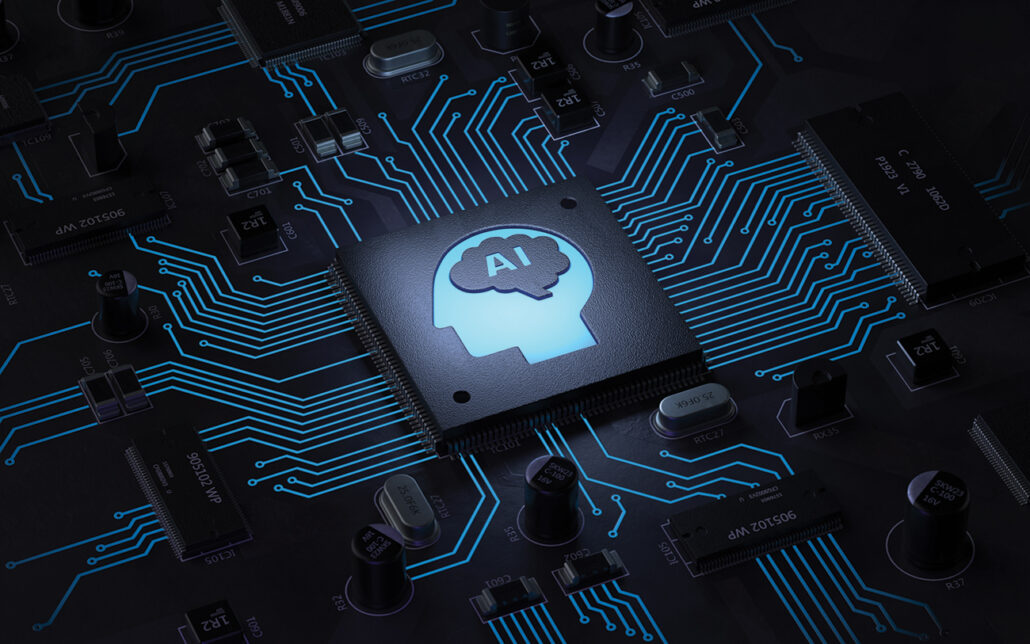
Retail Marketing and Generative AI
 By Jane Genova
By Jane Genova
A “tsunami of excitement over artificial intelligence.” That is the way Wall Street describes how business experiences the potential of that technology. For retail marketing especially promising is the specialized area called “generative AI.” Even at this early stage, it can help retailers manage the challenges of cost-efficiency, effectiveness of promotions, customization, data analysis and establishing new profit centers.
Generative AI
Essentially, AI is a broad-based branch of computer science that programs machines to simulate the neural networks in the human mind. The generative AI part of that falls into two categories: producing content and creating images. Currently, the leader for text creation is OpenAI’s ChatGPT, and for images, ranging from photos to original designs, it is OpenAI’s DALL-E. Given the expected profit from commercializing this technology, OpenAI will have plenty of competition.
Since AI is capable of learning and applying new knowledge and skills, every new version will be more powerful and creative than the previous one. According to McKinsey study “Generative AI Is Here,” the technology can “increase efficiency and productivity, reduce costs and open up new opportunities for growth.”
The content piece
ChatGPT can conjure up diverse types of content. They include:
Promotional copy. The continuum includes website text, advertisements, email, SMS, branding slogans and captions in multiple languages. Based on data from user feedback, the copy can be customized. Vue.ai found that customers will add 110 percent to their cart and spend 40 percent more if the messaging is personalized.
Proposals. An outdoors retailer might want to promote merchandise discounts in regional mobile home parks. Much of what is needed, be that the format or the best options for persuasive copy, could be provided.
Long form. That could be for supplying an explanation for customers of a complex concept such as reducing RVing costs or a complete guide to how to select the appropriate firearm for personal safety. It could also give retailers how-tos for managing during a recession or what font to use.
Creating music. Audio, just like visual, has become a dominant medium. Cloud Cover Media documents that music in the store does influence sales. The trick is to figure out what kinds of music resonate with the customer base. Classic tends to boost spending on luxury items and country on practical ones.
Serving as a confidant. Retailers can input their feelings, including concerns about boosting sales, and receive tailor-made responses.
The tool can eliminate the middleman. That can reduce marketing costs. In addition, since the technology is 24/7, there is the added advantage of speeded-up turnaround.

Example of promotional content
The author of this article keyed in this prompt: “Slogan for a gun discount store.” At the time, there was no limit on the number of tries. Here are the first seven that popped out:
- Where every shot is a bargain
- The sharpshooter’s bargain destination: discount gun store
- Guns, gear and unbeatable prices: discount gun store
- Firearms for less: shop at our discount gun store
- Get more bang for your buck at our discount store
- Save big on firearms and accessories at our discount store
- Discounts that hit the mark: your local gun store.
Just as with human-generated copy, retailers can edit it. That might consist of mixing the best elements of several options. Also, with the cost-efficiency of the tool, promotions can be updated more often. In addition, interpretation of data about customers provided by the tool can be crafted into what is fed into the prompt. The more specificity the prompt has, the better will be the utility of the options.
The visual piece
In white paper “DALL-E,” Deloitte explains the technology this way: “DALL-E … visualizes concepts by generating images of realistic and unrealistic objects from short phrase-like natural language prompts or text descriptions.”
Currently there are five major applications. Open AI provided this list through a prompt.
- Creating/editing images and animations. Those can be original or a classic modified for a specific commercial purpose.
- Generating branding elements such as logos and other outreach visual materials. This eliminates the expense of a professional graphics professional.
- Making visualizations of STEM concepts. Retailers in those niches can have access to unique material for their interior layout and promotions.
- Designing new products. This could develop profit centers for their sale. However, there is no guarantee that what DALL-E conceives will be easy to manufacture or sell.
- Updating databases. Data might have been missing for applications.
For a design of a logo for a discount firearms store, the owner or the in-house marketing team could input “loved local discount gun depot in Texas.” The more retailers embed emotional language in the prompt, the more nuance there will be in the image.
 Caution, of course
Caution, of course
Along with the tsunami of excitement is a wariness about generative AI. OpenAI head Sam Altman himself admitted in StrictlyVC that its power could mean “lights out” for civilization.
Especially alarming is its ability to learn. That knowledge could become an evil force field. Moreover, as is a known, since it is programmed by humans, it has exhibited biases. That might never be totally eliminated, dooming vulnerable groups to discrimination.
Another part of the lights out could be a massive negative impact on employment. According to software company Tidio, almost 69 percent of college graduates fear their jobs will vanish and their professional selves will become irrelevant. About the latter, there is a meme circulating: Your job is no longer important. Introducing this technology to retail could trigger alarm among the workers. They could believe that it is the beginning of the end of their employment.
On a less catastrophic note, there is the concern about accuracy. That has been a problem, and users should fact-check. Another current limitation is that it does not function in real time. That could mean that the data and perspective are incomplete or even out-of-date.
A gray area extends from the regulatory risk to the lag in the legal system between the laws on the books and the evolving issues associated with the technology. Questions and actual litigation have already emerged related to patents and copyrights. Retailers are making commercial use of generative AI.
There is also reputational risk. As with blockchain, there has been a critical focus on how much energy is consumed in the computer processing. Given that energy security is a global priority, users of this technology could encounter a public relations backlash. That could tarnish the brand.
Beyond hype
Ever since the Internet ushered in ecommerce, retail has been forced to change and keep changing. Exploring the potential of generative AI could be shaping up as yet another must-do. Unlike the situation with some other technological innovations such as artificial reality, the enthusiasm about the benefits of this technology is not futuristic. Already businesses are experiencing the benefits.
Jane Genova is an award-winning business writer, published book author and blogger. Her articles have been published in AOL, Motley Fool, Yahoo Finance, Payment Week, Business.com, Daily Business News and O’Dwyer PR.



